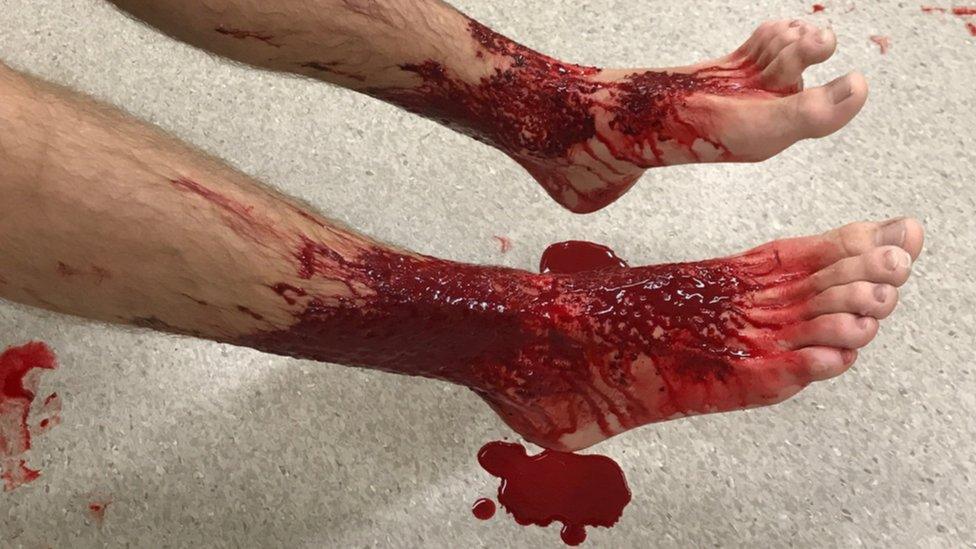Australian teenager in hospital after sea bug attack
- Published
Sam Kanizay, 16, was left covered in blood by the flesh-eating bugs in Melbourne
An Australian teenager is recovering in hospital after being bitten by multiple "mite-sized sea critters".
Sam Kanizay, 16, found his feet and ankles covered in blood after soaking his legs in Melbourne's Brighton Beach on Saturday evening.
Jarrod Kanizay said his son arrived home with what "looked like a war injury" and that his legs would not stop bleeding.
The family are seeking expert opinion to identify the flesh-eating bugs.
Marine biologists have said they were likely to have been sea fleas, tiny scavenging marine animals.
WARNING: This article contains a close up image of the injury.
After a tiring football game on Saturday evening, the 16-year-old decided to soak his legs in the cold bay near his home.
Speaking to the BBC's World Update radio show, Sam described feeling pins and needles in his legs after standing waist-deep in dark cold water for about half an hour.
After shaking off what he thought was sand coated around his ankles, he walked across the beach before looking down and realising that his feet were "covered in blood".
"It bled for ages, and it's still seeping blood now," he said.

Sam Kanizay was seen immediately at hospital
"It looked like a war injury... like a grenade attack. It was really bloody," his father told BBC News.
"We got him in the shower but as soon as we did that the blood kept re-appearing," said Mr Kanizay.
"It wasn't clotting at all. It just kept bleeding and bleeding."
After two local hospitals could not identify the cause of the multiple pin-prick injuries, the Melbourne father decided to investigate and went back to the beach.

"Sam is very positive," said his father.
"I collected these strange creatures from the same spot last night by trapping them in a net and standing in the water myself," he said.
"We got thousands of these little mite-type bugs and they've been sent on to experts."
Mr Kanizay said he hoped the sandy-coloured mites would not scar his son, and he is expected to make a full recovery.
"We are just waiting on the experts to tell us what they are and how they behave and why this happened."
Marine biologist Dr Genefor Walker-Smith, who saw some of the samples, told Australia's Herald Sun newspaper, external that the bugs were probably lysianassid amphipods, or sea fleas.
"It's possible he disturbed a feeding group but they are generally not out there waiting to attack like piranhas," she said.
Experts have said such cases are very rare and that there is no reason for alarm.